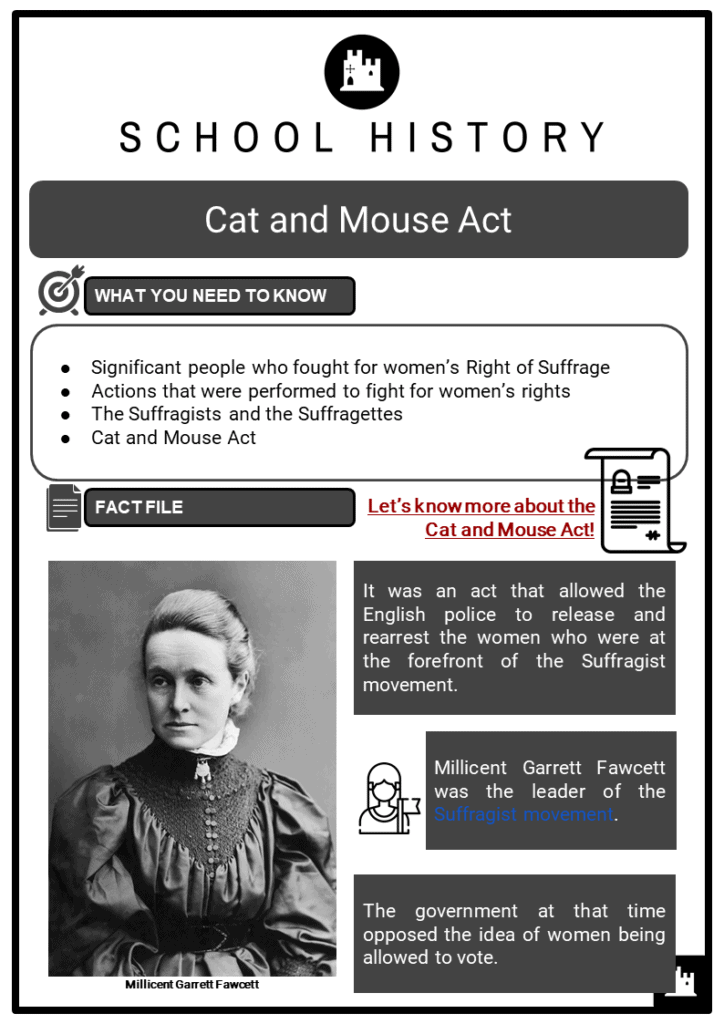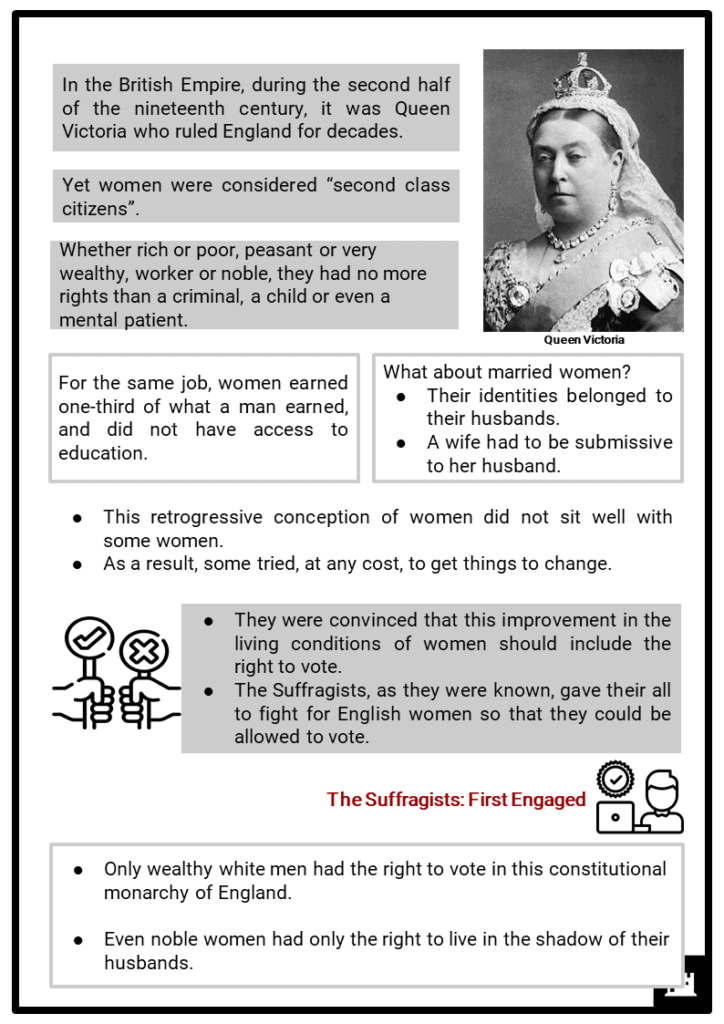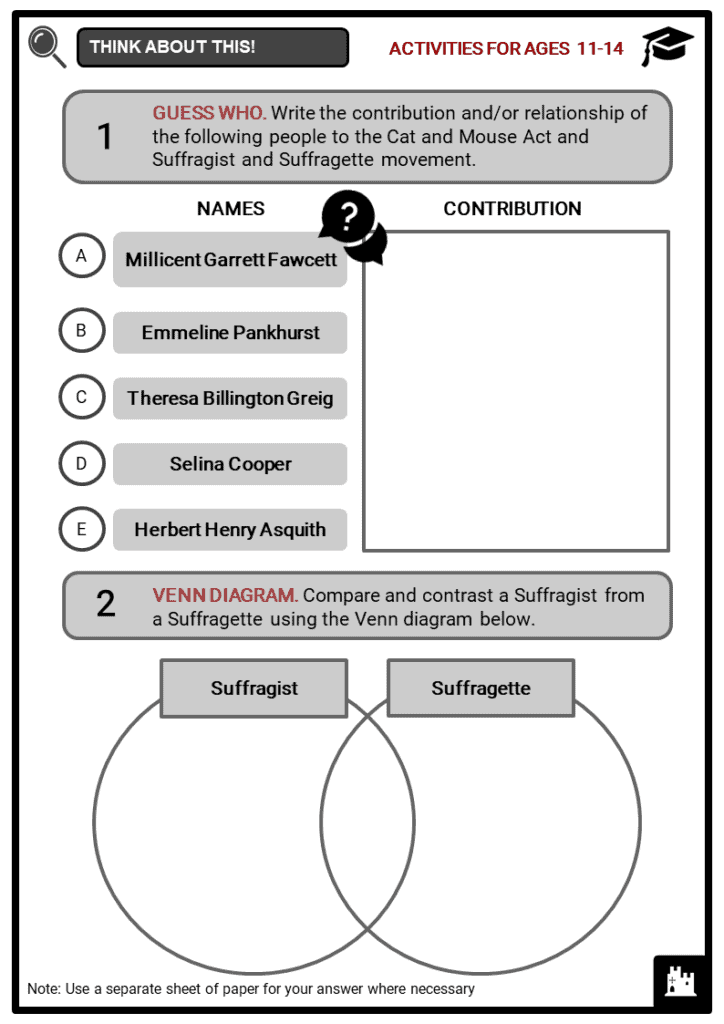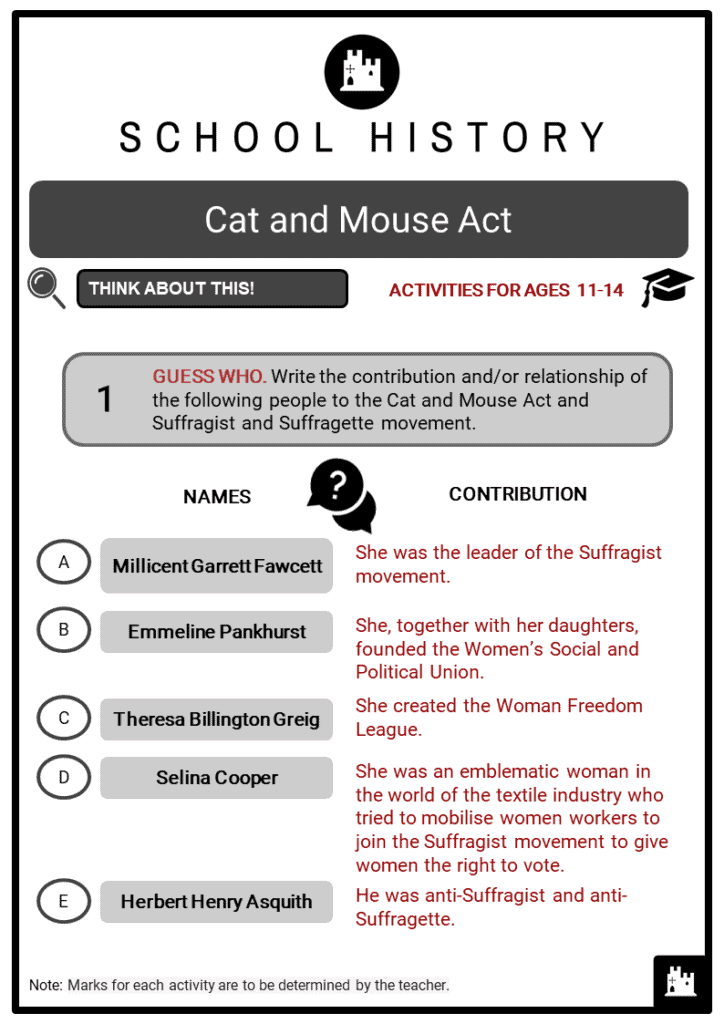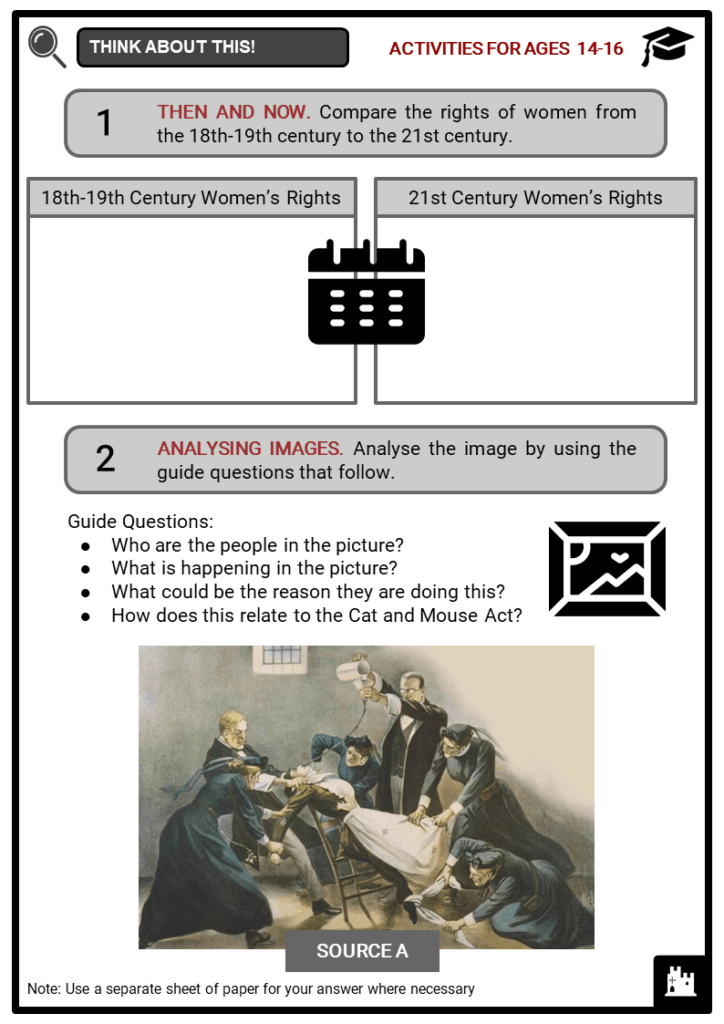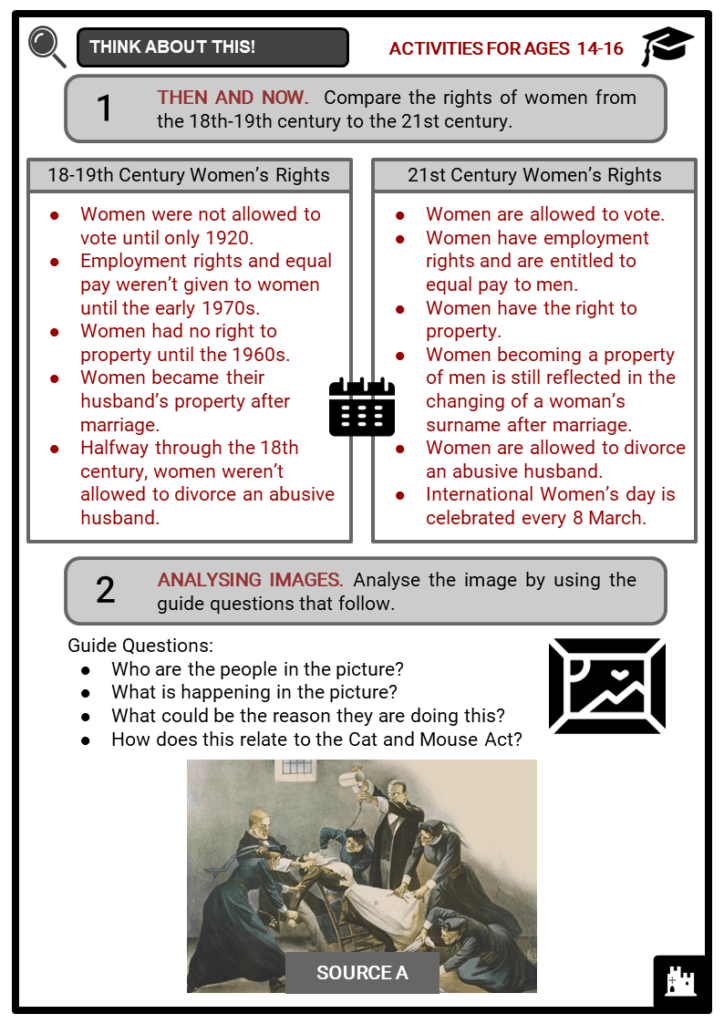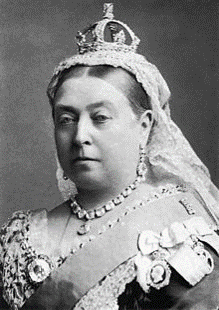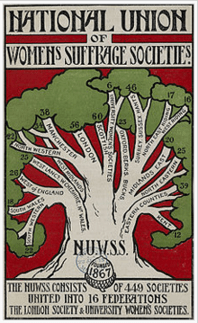Download Cat and Mouse Act Worksheets
Do you want to save dozens of hours in time? Get your evenings and weekends back? Be able to teach Cat and Mouse Act to your students?
Our worksheet bundle includes a fact file and printable worksheets and student activities. Perfect for both the classroom and homeschooling!
Table of Contents
Add a header to begin generating the table of contents
Summary
- Significant people who fought for women’s Right of Suffrage
- Actions that were performed to fight for women’s rights
- The Suffragists and the Suffragettes
- Cat and Mouse Act
Key Facts And Information
Let’s know more about the Cat and Mouse Act!
- It was an act that allowed the English police to release and rearrest the women who were at the forefront of the Suffragist movement.
- Millicent Garrett Fawcett was the leader of the Suffragist movement.
- The government at that time opposed the idea of women being allowed to vote.
- In the British Empire, during the second half of the nineteenth century, it was Queen Victoria who ruled England for decades.
- Yet women were considered “second class citizens”.
- Whether rich or poor, peasant or very wealthy, worker or noble, they had no more rights than a criminal, a child or even a mental patient.
- For the same job, women earned one-third of what a man earned, and did not have access to education.
- What about married women?
- Their identities belonged to their husbands.
- A wife had to be submissive to her husband.
- This retrogressive conception of women did not sit well with some women.
- As a result, some tried, at any cost, to get things to change.
- They were convinced that this improvement in the living conditions of women should include the right to vote.
- The Suffragists, as they were known, gave their all to fight for English women so that they could be allowed to vote.
The Suffragists: First Engaged
- Only wealthy white men had the right to vote in this constitutional monarchy of England.
- Even noble women had only the right to live in the shadow of their husbands.
- They were rich enough but since they were women, they are excluded.
- In 1884, things began to change.
- A law gave women the right to own their own body.
- Women, therefore, became individuals, and from then on they could legally claim all other rights.
- Millicent Garrett Fawcett was born in 1847 into a rather liberal family.
- She protested in the 1870s to obtain the right to vote for women.
- Widowed that same year, she devoted herself fully to politics.
- Persuaded that by putting pressure on the members of parliament, they could convince them that they were fit to be part of the political system, Millicent sensitised women to the issue of the right to vote: these groups of women activists become “Suffragists”.
- By asking questions such as “Who defines the laws?”, “Who decides who is a citizen and who is not?”, and “According to which criteria?” Suffragists undermined the whole system of Victorian England.
- The oppositions were immediate.
- This revolution appeared as a real threat.
- The role of women was different from that of men: they were first and foremost wives to raise children and take care of their homes.
- If women got involved in politics, who would take care of the home?
- Those who dared to speak in public were described as hysterical.
- It was inconceivable for many men and women of the late nineteenth century that women would move from the private sphere to the public sphere.
- In 1897, Millicent Garrett took the helm of a brand new organisation that brought together all the Suffragist societies of the country: the National Union of Women’s Suffrage (NUWSS).
- Under her leadership, the NUWSS, which included both female and male sympathisers, became the leading Suffragist movement in the world.
- Gathered under a single campaign for more efficiency, Suffragists multiplied the militant actions, but always acting within the law.
- Selina Cooper, an emblematic woman in the world of the textile industry, tried to mobilise women workers to join the Suffragist movement to give women the right to vote.
- In 1900, 29,859 signatures were presented to London deputies.
- However, there was no improvement on the horizon.
- It had been 30 years since Millicent Garrett Fawcett fought for the women’s right to vote.
Suffragettes: “Deeds, not words”
- Other women did not intend to wait another 30 years.
- On 10 October, 1903, Emmeline Pankhurst and her daughters Christabel, Sylvia and Adela founded the Women’s Social and Political Union (WSPU).
- A member of the independent Labour Party, an authoritarian and strongly committed woman, Emmeline Pankhurst wanted the WSPU to focus on concrete actions or deeds, hence their slogan: “deeds, not words”.
- But her daughter Christabel wanted to go further.
- Like many women of her generation, she was frustrated by the legalistic methods of Millicent Garrett and her peers who, she said, had come to nothing.
- This lack of respect was immediately turned into an offence: the young women were arrested and imprisoned, 7 days for Christabel and 5 days for her friend.
- It received extensive press coverage.
- In 1905, Christabel and a friend were ejected from a political rally for asking the question of the women’s right to vote. No one answered them.
- Christabel spat on a policeman.
- Realising the power of demonstrations and action, Emmeline Pankhurst agreed with her daughter and opted for a strategy of confrontation.
- Those who were pejoratively called “Suffragettes” would now draw the public’s attention to their cause by seeking at any cost to make people talk about them, good or bad.
- Theresa Billington Greig, a 28-year-old former teacher who had been working full-time for the organisation since its inception, said it was almost a moral duty for women to break the law, since “they’ve been done without them and against them.”
Violent Activism vs. Legal Militancy
- The Suffragettes became more violent and aggressive as they interrupted public meetings, heckled politicians, stormed the Parliament, broke windows, chained themselves to railings, and planted bombs, all deeply shocking behaviour. Thus, it became impossible for the government to ignore the movement.
- Millicent Garrett, leader of the Suffragists, did not approve of or collaborate with Emmeline Pankhurst, leader of the Suffragettes.
- Although she acknowledged that Suffragettes were pushing the women’s cause more quickly, Millicent continued to believe in her weighted, legal and constitutionalist methods.
- On 7 February, 1907, the Suffragists organised a big demonstration: 5,000 women of all social origins and of all ages crossed London in the cold and in the rain.
- In 1906, the Liberal Party took power after 11 years of Conservative rule.
- But the new hopes were quickly dashed: this government was certainly reforming, but not for women, quite the contrary.
- The Prime Minister, Herbert Henry Asquith, was anti-Suffragist and anti-Suffragette.
- He played on the fact that women did not want this right to vote.
- If they did not mobilise in sufficient numbers, it was because they were not interested.
- The Suffragettes decided to take up the challenge.
- On 21 June, 1908, at Hyde Park, a gigantic demonstration took place under a radiant sun, with 50,000 women parading in white dresses.
- But the government remained deaf, no one wanted to commit to the right of women.
- Even the Labour Party hesitated between fighting for the right of the workers or integrating the workers.
- After years of struggle, the disappointment was heavy.
- Suffragettes lost activists who revolted against the violent manners employed by the WSPU, and the too despotic personality of its founder Emmeline Pankhurst.
- Teresa Billington Greig seceded and created the “Woman Freedom League”: through quieter actions, its members protested passively by refusing to participate in the census of the population or pay their taxes.
Cat and Mouse Act
- The Cat and Mouse Act is the name given by journalists to the 1913 Temporary Discharge for the Ill Health Act in the United Kingdom.
- This law sought to thwart the hunger strikes of imprisoned Suffragists.
- In their fight for the right to vote, the Suffragettes of the Women’s Social and Political Union (WSPU) resorted to violent and aggressive acts and were regularly imprisoned.
- But their time in prison was still an opportunity for them to publicly protest against government methods by carrying out hunger strikes.
- Prison authorities were then forced to release them on medical grounds, making the government’s arrest policy ineffective.
- The government then ordered the prison authorities to force-feed them through a stomach or nostril tube.
- But this practice led to long-term illnesses that were again denounced to the public as abusive treatment of Suffragettes.
- The promulgation of this law made it possible to put an end to the forced feeding of incarcerated Suffragettes, which was beginning to be badly perceived by the population.
- Suffragettes on hunger strike, for example, received no care until their health became a concern and they were released.
- Anything that could happen to them once liberated was no longer the responsibility of the state, and the women were thus put out of harm’s way until they regained strength and the authorities arrested them again for any reason whatsoever so that they could serve their entire initial sentence.
- The law was not only reproved by public opinion, but it did not allow effective control of the most turbulent Suffragettes who, once released, were supported by a network of sympathisers.
- It ended up being seen as an attack on the fundamental rights, not only of the Suffragettes but of all prisoners.
- The nickname given to the law (Cat and Mouse Act) reflects the sympathy felt by the population for the Suffragettes and the denunciation of government cruelty.
- These decisions had a significant impact on the popularity of Herbert Asquith’s government.
- The law ultimately benefitted the Labour Party, which at the time supported the struggle for women’s suffrage.
- The philosopher Bertrand Russell thus left the Liberal Party of Asquith and wrote a pamphlet to denounce the anti-liberal and unconstitutional character of the law promulgated by his former party.
- A large proportion of the liberal middle classes turned to the Labour Party on this occasion.
Image sources:

